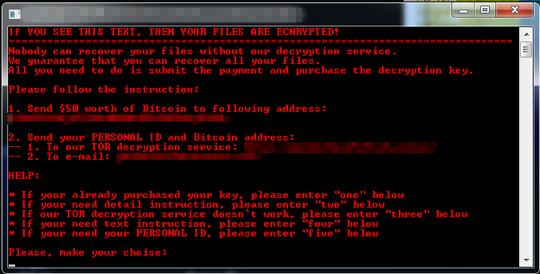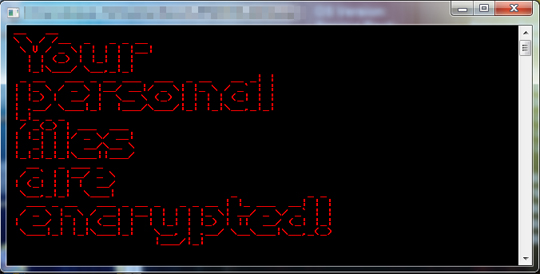RANSOM_PENDOR.A
Trojan:Win32/Bitrep.B (Microsoft) ; HEUR:Trojan.Win32.Generic (Kaspersky)
Windows


Threat Type: Ransomware
Destructiveness: No
Encrypted: No
In the wild: Yes
OVERVIEW
Downloaded from the Internet
This Ransomware arrives on a system as a file dropped by other malware or as a file downloaded unknowingly by users when visiting malicious sites.
It connects to certain websites to send and receive information.
It encrypts files with specific file extensions. It encrypts files found in specific folders.
TECHNICAL DETAILS
499,200 bytes
EXE
No
15 Jun 2018
Displays message/message boxes, Encrypts files
Arrival Details
This Ransomware arrives on a system as a file dropped by other malware or as a file downloaded unknowingly by users when visiting malicious sites.
Installation
This Ransomware drops the following files:
- {Directory of malicious file}\nope.bin
- {Directory of malicious file}\pendor.exe -> Used as the decryptor
- {Directory of malicious file}\error.ico -> Icon for encrypted files
- {Directory of malicious file}\instruction.txt -> Ransom note
- {Directory of malicious file}\pendor_key.txt -> Contains UniqueID of victim
- {Directory of malicious file}\scvhsot.exe -> connects to the C&C server
- %UserProfile%\K3Log.txt -> Installation date
Other System Modifications
This Ransomware adds the following registry entries:
HKEY_CLASSES_ROOT\Pendor\DefaultIcon
{Default} = {Directory of malicious file}\error.ico
HKEY_CLASSES_ROOT\Pendor\shell\
open\command
{Default} = "{Directory of malicious file}\pendor.exe" "%1"
HKEY_CLASSES_ROOT\Pendor
{Default} =
HKEY_CLASSES_ROOT\.PNR
{Default} = Pendor
Other Details
This Ransomware connects to the following website to send and receive information:
- http://{BLOCKED}fnxh.onion/gt.php?h={Unique ID}&k={Unique Key}
It does the following:
- The ransom note can also be viewed by running the {Directory of malicious file}\pendor.exe


- This Ransomware executes the following commands:
- {Directory of malicious file}\svchsot.exe "http://pendor4cys5ofnxh.onion/gt.php?h={Unique ID}&k={Unique Key}"
- {Directory of malicious file}\pendor.exe "kill "{Directory of malicious file}\{Malware filename}.exe""
- taskkill /F /IM {Directory of malicious file}\scvhsot.exe
Ransomware Routine
This Ransomware encrypts files with the following extensions:
- .doc
- .docx
- .xls
- .xlsx
- .ppt
- .pptx
- .pst
- .ost
- .msg
- .eml
- .vsd
- .vsdx
- .csv
- .rtf
- .wks
- .wk1
- .dwg
- .onetoc2
- .snt
- .jpeg
- .jpg
- .docb
- .docm
- .dot
- .dotm
- .dotx
- .xlsm
- .xlsb
- .xlw
- .xlt
- .xlm
- .xlc
- .xltx
- .xltm
- .pptm
- .pot
- .pps
- .ppsm
- .ppsx
- .ppam
- .potx
- .potm
- .edb
- .hwp
- .sxi
- .sti
- .sldx
- .sldm
- .vdi
- .vmdk
- .vmx
- .gpg
- .aes
- .ARC
- .PAQ
- .bz2
- .tbk
- .bak
- .tar
- .tgz
- .gz
- .7z
- .rar
- .zip
- .backup
- .iso
- .vcd
- .bmp
- .png
- .gif
- .raw
- .cgm
- .tif
- .tiff
- .nef
- .psd
- .ai
- .svg
- .djvu
- .m4u
- .m3u
- .mid
- .wma
- .flv
- .3g2
- .mkv
- .3gp
- .mp4
- .mov
- .avi
- .asf
- .mpeg
- .vob
- .mpg
- .wmv
- .fla
- .swf
- .wav
- .mp3
- .sh
- .class
- .jar
- .java
- .rb
- .asp
- .php
- .jsp
- .brd
- .sch
- .dch
- .dip
- .pl
- .vb
- .vbs
- .ps1
- .bat
- .cmd
- .js
- .asm
- .h
- .pas
- .cpp
- .ÿÿÿÿ
- .c
- .cs
- .suo
- .sln
- .ldf
- .mdf
- .ibd
- .myi
- .myd
- .frm
- .odb
- .dbf
- .db
- .mdb
- .accdb
- .sql
- .sqlitedb
- .sqlite3
- .asc
- .lay6
- .lay
- .mml
- .sxm
- .otg
- .odg
- .uop
- .std
- .sxd
- .otp
- .odp
- .wb2
- .slk
- .dif
- .stc
- .sxc
- .ots
- .ods
- .3dm
- .max
- .3ds
- .uot
- .stw
- .sxw
- .ott
- .odt
- .pem
- .p12
- .csr
- .crt
- .key
- .pfx
- .der
It encrypts files found in the following folders:
- %UserProfile%
- {All fixed and remote drives except for System Root}
It appends the following extension to the file name of the encrypted files:
- .pnr
SOLUTION
9.850
13.668.08
19 Sep 2017
13.669.00
20 Sep 2017
Step 1
Before doing any scans, Windows XP, Windows Vista, and Windows 7 users must disable System Restore to allow full scanning of their computers.
Step 2
Note that not all files, folders, and registry keys and entries are installed on your computer during this malware's/spyware's/grayware's execution. This may be due to incomplete installation or other operating system conditions. If you do not find the same files/folders/registry information, please proceed to the next step.
Step 3
Delete this registry value
Important: Editing the Windows Registry incorrectly can lead to irreversible system malfunction. Please do this step only if you know how or you can ask assistance from your system administrator. Else, check this Microsoft article first before modifying your computer's registry.
- In HKEY_CLASSES_ROOT\.PNR
- {Default} = Pendor
- {Default} = Pendor
- In HKEY_CLASSES_ROOT\Pendor
- {Default} = ""
- {Default} = ""
Step 4
Search and delete these files
- %UserProfile%\K3Log.txt
- {Directory of malicious file}\nope.bin
- {Directory of malicious file}\scvhsot.exe
- {Directory of malicious file}\pendor.exe
- {Directory of malicious file}\error.ico
- {Directory of malicious file}\instruction.txt
- {Directory of malicious file}\pendor_key.txt
Step 5
Restore encrypted files from backup.
Step 6
Scan your computer with your Trend Micro product to delete files detected as RANSOM_PENDOR.A. If the detected files have already been cleaned, deleted, or quarantined by your Trend Micro product, no further step is required. You may opt to simply delete the quarantined files. Please check the following Trend Micro Support pages for more information:
Did this description help? Tell us how we did.

